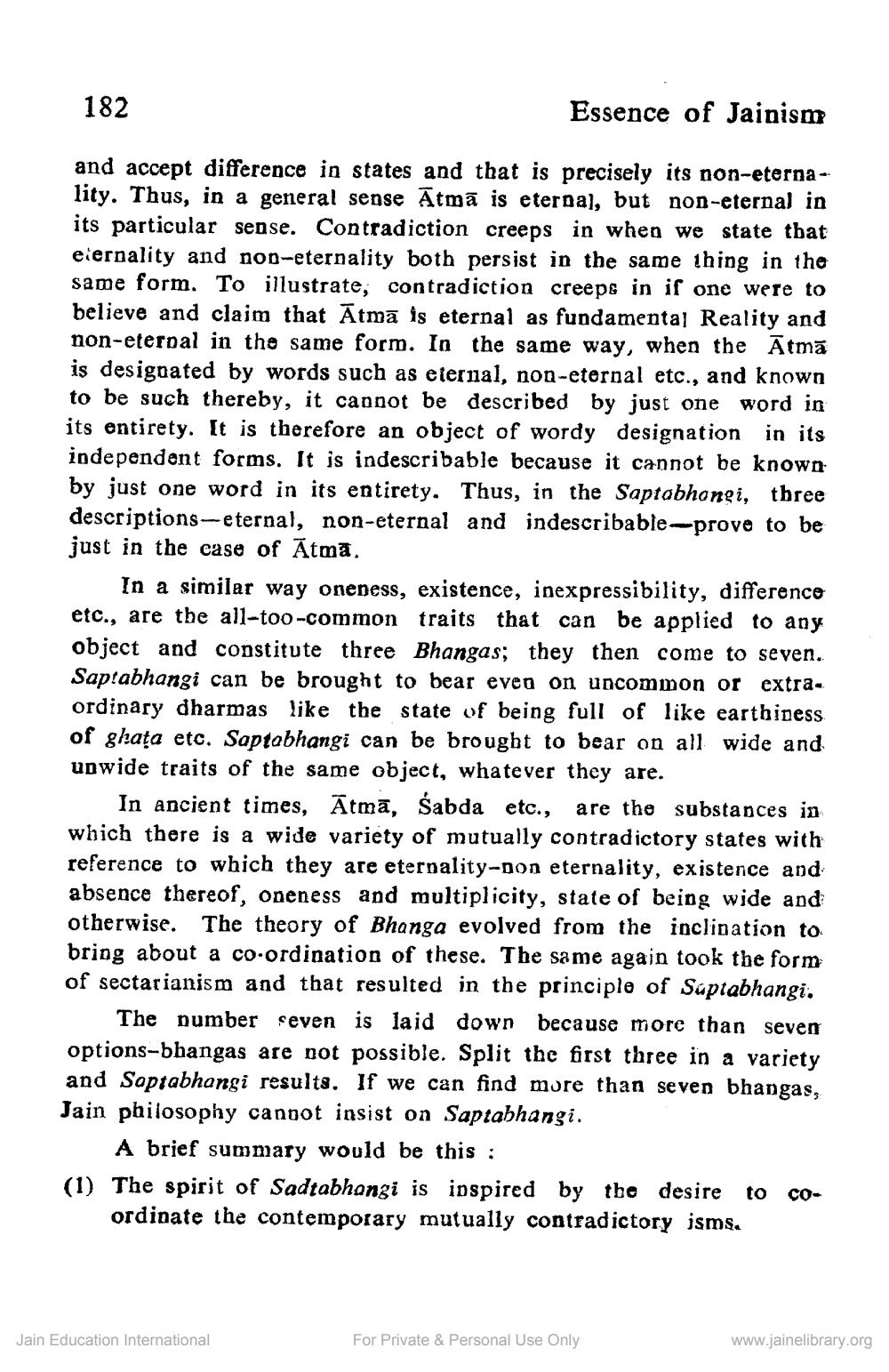________________
182
Essence of Jainism
and accept difference in states and that is precisely its non-eternality. Thus, in a general sense Atma is eternal, but non-eternal in its particular sense. Contradiction creeps in when we state that eternality and non-eternality both persist in the same thing in the same form. To illustrate, contradiction creeps in if one were to believe and claim that Atma is eternal as fundamental Reality and non-eternal in the same form. In the same way, when the Atma is designated by words such as eternal, non-eternal etc., and known to be such thereby, it cannot be described by just one word in its entirety. It is therefore an object of wordy designation in its independent forms. It is indescribable because it cannot be known by just one word in its entirety. Thus, in the Saptabhangi, three descriptions-eternal, non-eternal and indescribable-prove to be just in the case of Atma.
In a similar way oneness, existence, inexpressibility, difference etc., are the all-too-common traits that can be applied to any object and constitute three Bhangas; they then come to seven. Saptabhangi can be brought to bear even on uncommon or extraordinary dharmas like the state of being full of like earthiness. of ghata etc. Saptabhangi can be brought to bear on all wide and unwide traits of the same object, whatever they are.
In ancient times, Atma, Sabda etc., are the substances in which there is a wide variety of mutually contradictory states with reference to which they are eternality-non eternality, existence and absence thereof, oneness and multiplicity, state of being wide and otherwise. The theory of Bhanga evolved from the inclination to bring about a co-ordination of these. The same again took the form of sectarianism and that resulted in the principle of Suptabhangi.
The number seven is laid down because more than seven options-bhangas are not possible. Split the first three in a variety and Saptabhangi results. If we can find more than seven bhangas, Jain philosophy cannot insist on Saptabhangi.
A brief summary would be this:
(1) The spirit of Sadtabhangi is inspired by the desire ordinate the contemporary mutually contradictory isms.
Jain Education International
For Private & Personal Use Only
to
CO
www.jainelibrary.org




